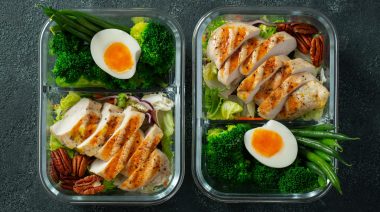Managing and preventing metabolic disorders like type 2 diabetes is of critical importance to athletes. Metabolic disease reduces an athlete’s ability to use energy efficiently and increases insulin resistance. In a recent study in PLOS ONE, researchers examined the effects of two diets on diabetes markers.
Study Design
For the first eight-week period, fifty people consumed a traditional Asian diet. For the next eight weeks, the participants either ate the same diet or switched to a traditional Western diet. Each diet was prepared for the participants, and included three meals and one snack daily. The number of calories was the same for each participant, no matter which diet they were on. The calorie count was enough to maintain their bodyweight.
Before, during, and after the study, took measurements for bodyweight, blood lipids, insulin resistance, and inflammation markers to find out what the difference between the diets would be.
Participants and Diets
Of the fifty participants, 28 were East Asian Americans. While Asians have lower rates of type 1 diabetes than other races, they have higher rates of type 2 diabetes, and the onset of metabolic disease occurs on average at a lower body mass index (BMI) than other races. The remaining participants were Caucasian Americans. All of the participants were at risk of developing type 2 diabetes.
The Asian diet consisted of 70:15:15 macronutrients from carbs, protein, and fat, respectively. It was also high in fiber. The Western diet was 50:16:34 and was low to moderate in fiber content. The protein from the Asian diet was primarily vegetable-based, whereas the Western protein was mostly animal-based.
Results
The traditional Asian diet improved insulin sensitivity, caused a loss in body fat, and improved the lipid profiles of both Asians and Caucasians. It also reduced inflammation for the Asian subjects.
The researchers planned to maintain the bodyweight of their participants, in order to factor out any weight changes that could alter the results. However, they had a difficult time doing so on the Asian diet, which caused weight loss. In fact, to maintain their weight, those on the Asian diet increased calorie consumption by over 100 calories daily for the second half of the study. This should have resulted in about two pounds of increased bodyweight. Instead, it resulted in nearly one pound lost. This might have been due to the higher indigestible fiber content, which was significant enough to exceed 100 calories daily.
The Western diet, by contrast, increased body fat and worsened insulin resistance for the Asians, even when their bodyweight stayed the same. For the Caucasian subjects, the Western diet increased bodyweight and body fat, but didn’t increase insulin resistance as long as they maintained a normal BMI.
Conclusions
This study suggests that there are indeed differences in responses to diets, depending on how long a given population has been consuming a similar diet. The higher fiber content and the lower amount of saturated fats in the Asian diet were probably responsible for the big differences in insulin sensitivity experienced by everyone in this study. The ideal diet seems to be one we need to explore on an individual basis, but should include copious fiber and a healthier array of fats.
References:
1. William Hsu, et. al., “Improvement of Insulin Sensitivity by Isoenergy High Carbohydrate Traditional Asian Diet: A Randomized Controlled Pilot Feasibility Study,” PLOS ONE 2014, 9:9
Photo courtesy of Shutterstock.






